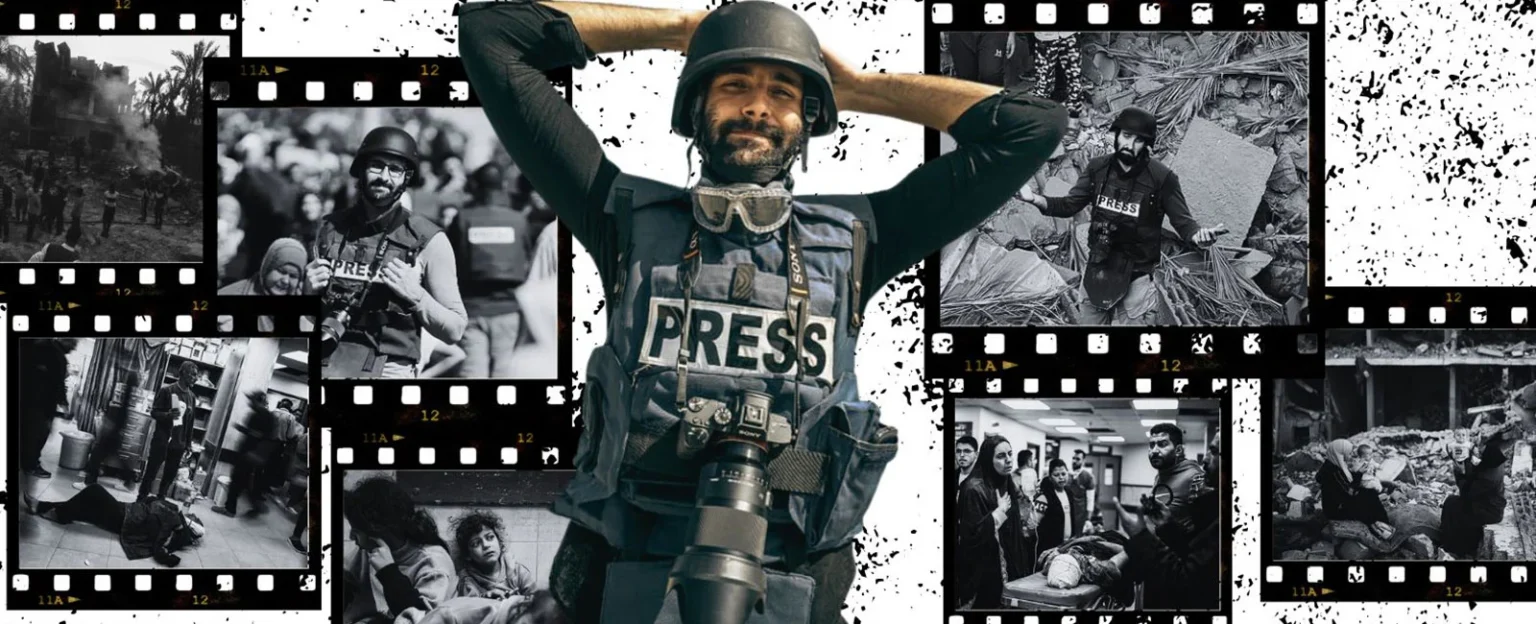Motaz Azaiza, a Palestinian photojournalist, will be leaving the war-torn Gaza Strip, he announced on Tuesday in a social media video.
“I had to evacuate for a lot of reasons you all know some of it but not all of it,” he wrote on social media platform X. “Thank you all. Pray for Gaza.”
Azaiza has been one of the key media forces in the besieged Gaza Strip, bringing live updates of the Israel-Hamas war to his more than 18 million followers on Instagram and over a million on X.
“This is the last time you will see me with this heavy, stinky vest,” Motaz said in an Instagram video, pointing to his blue press vest, often used by journalists in war zones to identify themselves as non-combatants.
The photojournalist said he was sorry to leave Gaza and that he was hopeful to return to help rebuild the enclave. In the video, he is surrounded by his close friends and family members, who are seen helping him remove his press vest and embracing him as he bids goodbye to Gaza.
Millions around the world have been witnessing the war in Gaza through the lens of Palestinians sharing their daily realities on social media. These citizen journalists, through their posts on Instagram and X, have put a face to the conflict.
Their followers have developed a strong emotional connection with them in return.
Azaiza’s Instagram posts are often flooded with comments asking about his well-being, more so when he hasn’t posted on his social media for a while. He has often posted videos and gone live on his Instagram documenting Israeli airstrikes in Gaza, where he can be seen sheltering amid the rubble of demolished homes.
Azaiza’s work initially focused on photographing everyday life in Gaza, before he began covering Israel’s wars in Gaza in 2014 and 2021. His Instagram following has grown exponentially – from 25,000 to 18 million – in just over 100 days since Israel began its military campaign in response to Hamas’ October 7 attack.
“Remember that we’re not content to be shared, we are a nation that is getting killed and we’re trying not to be ethnically cleansed,” he said in a recent post.
Other prominent journalists in Gaza include Plestia Alaqad, a 21-year-old woman from Gaza who shares daily first-person updates and candidly answers questions from her nearly 5 million followers, Bisan Owda, a Palestinian filmmaker and activist, Doaa Mohammad, a photographer and Hind Khoudary, a Palestinian journalist.
More than 80 journalists, most of them Palestinians, have been killed in Israeli strikes on Gaza since the October 7 attack, according to Reporters Without Borders (RSF). Of those, 18 were working at the time of their death.
The United Nations Human Rights commissioner has expressed concern at the high death toll among media workers in Gaza. The first 10 weeks of the war have been the deadliest recorded for journalists, with most journalists killed in a single year in one location, the US-based Committee to Protect Journalists (CPJ) said.
The International Criminal Court on January 9 confirmed that it is investigating potential crimes against journalists since the outbreak of the Israeli war on Gaza.
Israel has repeatedly denied claims that it is killing journalists, saying that it is only targeting Hamas militants. Israel’s supreme court rejected on January 9 a request from international media for free access to Gaza.




